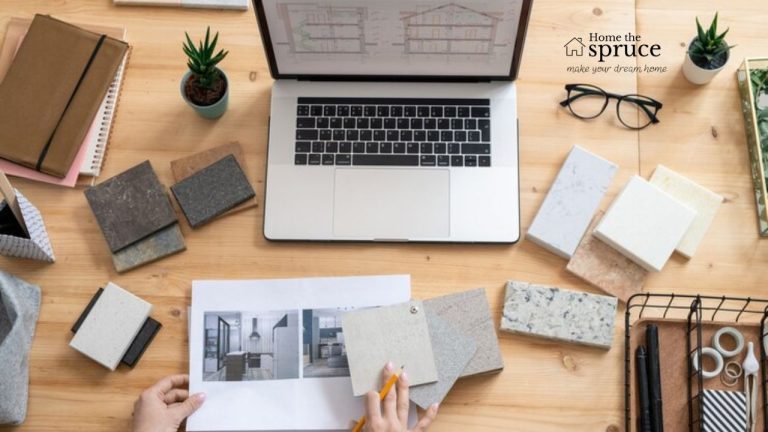Moving to a new apartment is a significant life event. It involves not just relocating your belongings but also planning, organization, and decision-making. Whether moving across town or just a few blocks away, the process can be overwhelming if you’re unprepared. That’s where this comprehensive checklist comes in. From planning to settling into your new space, we’ve covered everything you need for a smooth apartment move.

1. Start Early: Planning Ahead
When moving, the earlier you start, the easier the process will be. Begin by setting a moving date as soon as you know when you’ll move into your new apartment. You can work backward, breaking down the moving process into manageable tasks.
Create a Moving Timeline
A moving timeline ensures that you stay on track. If you plan to move in two weeks, for example, you should have specific goals for each day leading up to the move. Start by reserving moving trucks or hiring professional movers at least a month in advance. Then, break down the tasks week by week. For instance, Week 1 might focus on decluttering and packing non-essential items, while Week 2 could involve final packing and ensuring utilities are set up at your new place.
Budget for the Move
Moving costs can add up quickly, so it’s essential to budget early. Consider expenses such as:
- Hiring movers or renting a truck
- Packing materials (boxes, tape, bubble wrap)
- Utility setup and deposits
- Cleaning fees for both old and new apartments Setting aside a moving budget helps avoid unexpected financial stress.
2. Gather Essential Moving Supplies
Proper moving supplies are crucial for an organized and safe move. Don’t wait until the last minute to collect boxes or packing materials. Start gathering everything you need well in advance.
Types of Boxes and Where to Find Them
You’ll need a variety of box sizes for different items—small boxes for books, medium ones for kitchenware, and large ones for clothing and linens. If you want to save money, check local stores for free boxes or ask your friends if they have any lying around. If you prefer buying new, most moving supply stores will sell high-quality boxes designed for moving.
Additional Packing Materials
Remember packing tape, bubble wrap, packing peanuts, and labels. These materials will ensure that your belongings stay safe during the move. Use bubble wrap for fragile items like glassware, electronics, and artwork. Mark each box, noting what’s inside and which room it belongs in—this will save you time when unpacking.
3. Create a Packing Plan
Packing may be one of the most time-consuming parts of the moving process, so having a plan is essential. Start as early as possible to prevent last-minute stress.
Sort and Declutter
Before you start packing, take a moment to sort through your belongings. Moving is the perfect opportunity to declutter. Donate, sell, or discard anything you don’t need or use anymore. Not only will this reduce the amount of stuff you need to move, but it will also give you a fresh start in your new apartment.
Pack Room by Room
Tackling one room at a time helps keep you organized. Start with rooms you don’t use daily, like the guest room or basement. As you pack, label the boxes with the room they belong in and a brief description of the contents, such as “Kitchen—Pots and Pans.” This makes unpacking much more manageable.
Special Care for Fragile Items
Fragile items like dishes, glassware, and electronics need extra attention. Use bubble wrap, towels, or old T-shirts to wrap delicate items. Consider investing in special moving boxes for protection if transporting expensive or highly fragile items.
4. Moving Tips for a Smooth Transition
Even with careful planning and preparation, moving can be challenging. Here are a few moving tips to help the process go smoothly.
Efficient Packing Techniques
When packing clothes, try rolling them instead of folding them. This not only saves space but also prevents wrinkles. Use towels and blankets as cushioning for fragile items or electronics, reducing the need for extra packing materials.
First-Night Box
Pack a “first-night” box containing all the essentials you’ll need immediately after moving. This box should include toiletries, a change of clothes, phone chargers, basic kitchenware (like plates, cups, and utensils), and any documents you’ll need for the first few days.
Professional Movers vs. DIY
Hiring professional movers can be a great option, especially if you have a lot of heavy furniture or delicate items. Working with a reliable moving company can ease the stress of the process and ensure your belongings are handled with care. However, if you’re on a budget or prefer a more hands-on approach, organizing a DIY move with friends or family is an option. If you go the DIY route, ensure you have enough help to do the job efficiently.
Measure Your New Space
Before moving, measure your new apartment. This will help you ensure that your furniture fits and give you an idea of how to arrange your space best. Some furniture may need to be disassembled before moving.
Move-Out and Move-In Cleaning
Consider hiring a cleaning service to deep-clean your old apartment before you leave. This will ensure that you get your full security deposit back. Similarly, thoroughly cleaning before you start unpacking is always a good idea when you arrive at your new apartment.
5. Notifying Important Parties
Moving isn’t just about packing up your things; you’ll also need to notify several parties about your change of address and moving schedule.
Change Your Address
Start by submitting a change of address form with USPS. This will ensure that your mail is forwarded to your new apartment. Don’t forget to update your address with your bank, credit card companies, and any subscription services you use.
Update Utility Providers
Before moving, contact utility providers to set up your new accounts. This includes electricity, gas, water, and internet. To avoid any inconvenience, ensure everything is set up to be activated by your move-in date.
6. Move-In Day Checklist
On the big day, there are several things you need to do to make sure the move goes as smoothly as possible.
Final Walkthrough
Before leaving your old apartment, do a final walkthrough to ensure you didn’t forget anything and that everything is in good condition. Check for any items you may have left behind, and take a few final photos of the apartment to document its condition.
Unpacking Priorities
When you arrive at your new apartment, unpack the essentials first. Focus on the bedroom and bathroom so you can settle in immediately. Unpacking room by room will make the process feel less overwhelming.
Check Utilities
Once you’ve moved in, check that everything works properly. This includes the lights, water, heat/air conditioning, and internet. If anything isn’t working, contact the respective service providers to get it sorted out immediately.
7. Settling In
Now that the move is complete, it’s time to make your new apartment feel like home. While unpacking can take time, these tips will help you settle in smoothly.
Organize Your Space
Unpack your items methodically. Start with the essentials, like furniture and kitchen items, and work through the rest. Take time to arrange your belongings to make the apartment feel comfortable and functional.
Explore Your New Neighborhood
Take some time to explore your new neighborhood. Find local grocery stores, coffee shops, and parks. Familiarizing with the area will help you feel more at home and make your daily life more convenient.
Conclusion
Moving to a new apartment doesn’t have to be stressful if you approach it with a plan. By starting early, gathering the right supplies, and following a clear checklist, you can ensure your move is as smooth as possible. Don’t forget to enjoy the process and embrace the excitement of starting fresh in a new space. With the proper preparation, you’ll settle into your new apartment quickly.












